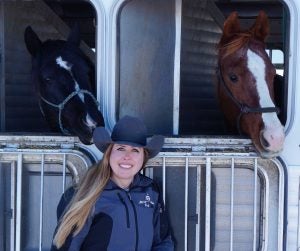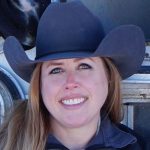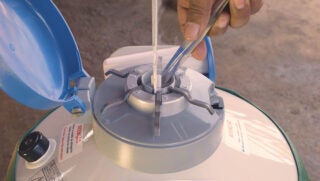As a rural Kansas resident, I feel compelled to express my growing concern about the negative effects the Electronic Logging Device (ELD) Mandate, Commercial Motor Vehicle (CMV) classifications, and Commercial Driver’s License (CDL) requirements have on the agriculture and livestock industries. With the extension of the agriculture exemption of the ELD Mandate expiring mid-March, it is time for us to talk to federal lawmakers.
My hope is, by sharing our personal situation, I can show how far reaching these rules and regulations are, uncovering the yet unforeseen costs to all American farms, ranches, and citizens. If these laws and mandates are not modernized but are enforced, it will have a devastating effect not only on tens of thousands of small agricultural businesses, but millions of rural Americans and the lives we love.
We are third-generation cattle ranchers and horse breeders in Western Kansas, close to the borders of three other states. My husband and I both work 80 hours a week keeping our businesses going. Due to our extreme rurality, we cannot avoid traveling to run both businesses in a cost effective and profitable way. This traveling, it appears, causes us to be mislabeled as a commercial driver, needing to comply with many unknown regulations including the ELD Mandate. I’ve learned that these regulations were not new, just not enforced until the ELD Mandate recently brought them to light.
A large part of the problem is the archaic and arbitrary nature of several regulations. A crucial one concerns the outdated threshold that triggers the need for a CDL to operate a personal truck and trailer. It is the lynchpin in the entire situation. When written in 1986, the Gross Vehicle Weight Rating (GVWR) threshold of 26,001 pounds, which required a CDL, purposely excluded most everyone not driving a semi-truck. Now, due to better safety quality and improvements by vehicle manufacturers, the GVWR has climbed to 14,000 pounds in newer 1-ton pickups — an increase of 65 percent over similar vehicles from the ’80s. Think of the capabilities we can now expect in larger-sized pickups. Thresholds like these need to be updated to reflect the true intent of those laws and keep pace with vehicle and trailer improvements. We as farmers, ranchers, horse owners and breeders, livestock show participants, 4-H parents, and the like are not commercial drivers, nor should our activities, whether for our livelihood or as a hobby, be regulated by laws that were clearly written to govern a wholly separate industry. Additionally, all ag should be permanently exempted from the ELD Mandate. The harm it will do to the farming and livestock industries cannot yet be quantified.
How did our ranch operation fall under these rules, regulations, and mandates to begin with? Aren’t we ag exempt?
As part of our daily operations, we shop around for feed, parts, supplies, and services we need to run our ranching businesses in the most economical way possible. In today’s competitive market, it is important to get the absolute most for your money — that’s Business 101. This includes leaving our local area for goods and services. With 2.06 million farms, I can only imagine how many folks are just like us. Not all ranch-related trips are problematic, just the ones that involve these numbers: 150, 26001, and 8/30.
Did you know leaving the Map 21 Ag-Exempt 150 air mile radius could put you in the same category as a For Hire Commercial Trucker? One hundred and fifty air miles is such a strange and arbitrary number, especially in this day and age. Who came up with this distance? And why? Did they have any knowledge of rural America and the needs of livestock owners? Does the purpose of the trip somehow change at that distance? Are we no longer on ranch business? It feels odd to be told how far we can haul our own animals in the course of our operation and still remain ag exempt. We do not get paid to sit behind the steering wheel. No money is made for the act of driving. It is our personal livestock. Despite these facts, once we hit this imaginary 150-air-mile-radius brick wall , we are no longer considered a rancher and horse breeder; we magically become a commercial, over-the-road-trucker and are treated as such. We are required to have a CDL, are considered by the Federal Motor Carrier Safety Administration to be driving a CMV, will be forced to keep log books, adhere to Hours Of Service rules, get medical cards, DOT numbers, pull into weigh stations, submit to annual vehicle inspections, and soon the devastating ELD Mandate. From a business perspective, this is alarming. The cost of running our business to the best of our ability just went up by thousands of dollars. Why? What is so different about how we operate outside the radius vs. inside the radius that would necessitate the extreme change in regulations?
Easy, the extreme change in regulations is due to the size of the rig we haul our livestock with. No, it’s not a semi-tractor trailer. It’s a 2012 Dodge Dually and either an old 30 foot stock trailer or a 2000, four-horse LQ trailer. A rig over 26,001 pounds GVWR, combined with being outside the 150 air mile radius, categorizes us as a CMV vs. ag exempt — the lynchpin I talked about above. It’s why many of us are now miscatagorized. We are now considered a CMV because we lost our Map 21 Ag Exemption at the end of the arbitrary radius. Why? Because we have a GVWR 1,000 lbs over a limit set in 1986. This puts an undo strain on our business, and thousands of rural agriculture businesses like ours. Rigs under the 26,001 combined GVWR never lose their Map 21 Ag Exemption. In fact, they can be driven coast to coast and remain ag exempt. Our business activities are no different than our neighbor or any other farmer, rancher, or livestock owner that owns a slightly smaller rig or has their needed services closer. Why are we treated differently?
Without the modernization and clarification of the CDL, CMV, and other FMCSA rules pertaining to ag exemptions and definitions of commerce, most livestock owners find themselves mislabeled, over-regulated, and at the mercy of arbitrary and archaic thresholds. Our only hope at keeping the intrusive ELD unit out of our pickup truck is the 8/30 rule. Fingers crossed there isn’t a problem staying under the eight travel days in a rolling 30, pulling the “too-big rigs” outside the air mile radius. Paper logs vs the ELD is a good thing, but we will still have to comply with the rest of the above list. Figuring out our particular situation took a lengthy conversation with the Kansas Corporation Commission. Most online resources were clearly written to govern For Hire Commercial Truckers.
Like most ranchers, our dually pickup has many purposes. So, even if we are able to stay exempt from the ELD itself, it means more planning and forgoing trips as needed; often a tough business decision to make. Don’t you think making a living is already hard enough for farmers, ranchers, and other livestock folks without trying to stay off the 8/30 ELD exemption merry-go-round? Me too!
Agriculture is agriculture. Ag exemption should mean exempt — not mostly, sort of, or sometimes exempt. Farmers, ranchers, and livestock owners who do not get paid for the act of hauling are not commercial drivers. We do not get paid to sit behind the steering wheel. We are using our trucks and trailers to go to work, no different than if we wore suits and drove a Subaru to the office. Some of us are lucky, living in more populated areas with closer services, but we are all doing the same work regardless of the miles we must travel. Therefore, we should all be grouped together under the governing laws. Not divided by the slightly more rural locations and the slightly higher GVWR of our rigs.

Animal welfare, safety, and the other real costs of the ELD Mandate:
Obviously the top ELD Mandate concern for the entire agriculture community is the HOS, 10-hour mandatory shutdown time. This rule is terrible for animal welfare — there is no debating that fact. There is good info on animal welfare concerns from Protect The Harvest.
For those of us hauling our own animals, the 10-hour mandatory shutdown will be very stressful. Unfamiliar places, and potential safety issues are a circumstance waiting to go wrong. Do we force our animals to stand on a trailer for 10 hours, or try to put them in poor quality pens that are probably not biosecure? Will we see a rise in theft? Pickups take no special skills to drive. Personal safety is a concern. A lot can happen in 10 hours. Set up a stopping point ahead of time, you say? Is there a way to tell the ELD that due to the terrible weather, traffic, a flat tire, sick livestock or other time waster, we need to break the driving rule because we are still 100 miles from that planned stop? This is not the answer and the fines associated with breaking the rules are very high. No one should ever have to choose between the safety of their animals,their property, or themselves, or face steep fines. Especially considering they aren’t a commercial driver and have been re-labeled as such. Why don’t we just switch drivers? The ELD and HOS rules don’t care if we have two qualified drivers in the pickup. We must adhere to the 11 driving hours in a 14-hour period, then a mandatory 10-hour shutdown. Why? We don’t have a sleeping berth in our pickup. It’s more proof these rules and regulations were not intended or written for us.
What about the true commercial livestock haulers?
It surprises me that animal welfare was not taken into serious consideration when instituting the ELD Mandate originally. It will force livestock haulers to place the animals under their control, in dangerous and stressful situations, in order to adhere to the HOS rules. I call for mandatory lawmaker education on this topic.
What will the American people think when they are traveling with their families this summer and pull into rest stops only to see a couple of large semi livestock haulers on their mandatory shutdowns, while their loads of cattle (pigs, bees, etc.) cook in the trailers? If it’s 90 degrees outside, imagine the temperature inside the trailer. Usually, enforcement of laws like these come down to the almighty dollar. So to put it in common “cents” terms, to prevent the above situation, the government will need to spend billions of taxpayer dollars. Without a federally funded infrastructure of safe and bio secure “wait stations” designed to safely house all species of livestock, or a permanent blanket agriculture exemption from the ELD and an adjustment in HOS, there is a largely ignored consequence to the American public.
It boggles my mind trying to quantify how much food prices at grocery stores will increase. Total hauling costs will at least double, more likely triple; there is already a shortage of qualified livestock haulers and more quit everyday. Add in the costs of livestock death and ruined produce (and the lawsuits that will stem from these losses). It won’t take long to trickle down to grocery store prices, thus affecting every single American.
What about the cost to food producers?
Here’s another hit to rural America. We work hard all year, pouring time, energy, and money into the crops and livestock we produce. Sale time comes around and then what? Sale prices have plummeted. Our buyers — often the middlemen — are now paying the national haulers double or triple.
Agriculture is one of the, if not the, largest employer in the country.
Ask your lawmakers to eliminate the arbitrary 150-air-mile radius and update the CDL GVWR threshold. Doing so will protect rural farmers and ranchers, offering a level playing field. Most importantly, exempt all agriculture and livestock businesses from the ELD Mandate — regardless of business size, travel distances, and commercial status, to keep food prices, and hauling prices reasonable.
In closing, I hope I piqued your interest and concern! #UpdateB4Mandate #nocdltodriveapickupandtrailer #eldorme #NOTforhire
To connect with the author, you can email her at cjgarland@hotmail.com or find her on Twitter at @cjgarland78.



